Modern Gothic design explores and empowers with futuristic noir

Image credit: Adobe Stock/Freeda Michaux.
Cyberpunk, glitch, mysticism, and dark “freak-forward” vibes combine to create the most dramatic design trend of the year: Modern Gothic.
While all of Adobe Stock’s 2020 design trends have their elements of drama, Modern Gothic is the darkest, edgiest, and most confrontational. This blend of contemporary, futuristic, and retro aesthetics communicates a clear desire for self-expression and empowerment, surfacing from myriad subcultures to the mainstream.
Design rooted in Goth subculture and ancient rites
When we hear the term “gothic,” what often comes to mind is a style centered around finding beauty and fascination in darkness: black fashion, dramatic makeup, dyed black hair, vampires and horror movies, 18th- and 19th century period aesthetics, and an interest in the occult. The contemporary Goth subculture originated in the U.K. in the 1980s as an offshoot of 1970s post-punk, with bands like Joy Division, Siouxsie and the Banshees, and Bauhaus, whose 1979 single “Bela Lugosi’s Dead” is often described as the birth of the goth rock genre.
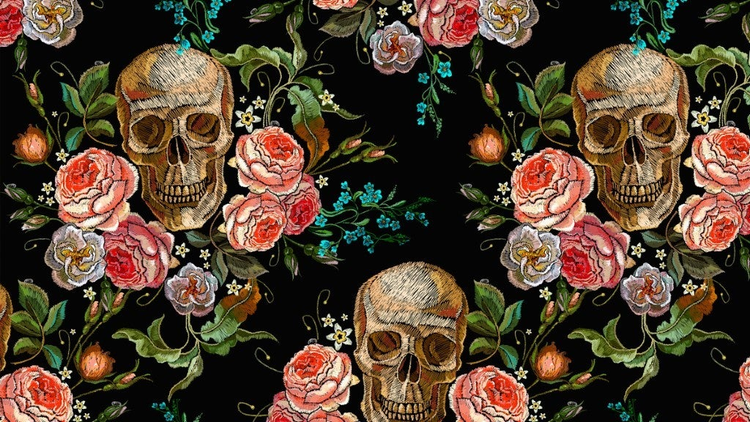
Image credit: Adobe Stock/Matrioshka.
Today’s Modern Gothic design trend incorporates this history and builds on it with an emphasis on a few key components to create a multifaceted and highly contemporary new aesthetic.
At the forefront is a fascination with occult, arcane, and witchy symbols, with designers incorporating runes, pentagrams, hands, eyes and other elements from Wicca, paganism, and more. In this design aesthetic, many ancient “magickal” practices become fertile ground for inspiration and discovery of potent graphic symbols.
Supernatural concepts and witchy aesthetics are definitely having a moment for a few reasons, confirms Shea Molloy, vectors and illustrations lead at Adobe Stock.
“This is also part of a larger celebration of 1990s culture, where lots of this imagery and fashion was really in style,” she says. “Beyond that, imagery of the supernatural is really tied to emotional responses to the world around you. Our expression, our spirituality and sense of self are all influenced by the world around us.”
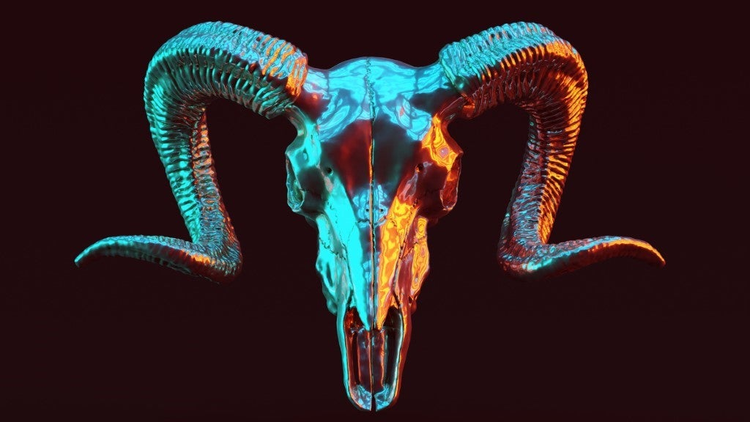
Image credit: Adobe Stock/Paul Campbell.
The adoption of these visuals has been scaling for a while, but Molloy notes it “spiked” in 2020. During the global COVID-19 crisis and amid much political instability and polarization in the U.S., she believes Modern Gothic design expanded rapidly in popularity in response to a collective need for more control.
“For creative professionals, expression and spirituality can be reflective of what we’re missing and what we’re relating to in the moment,” she says. “With magick, there’s a sense of regaining insight or intention. For some, the interest in witchcraft is a response to the patriarchy and a reflection of feminine power, expressed in imagery that looks like empowered female forms and deals with body autonomy, hands, and eyes.”
That desire for self-reflection and control has also manifested in a renewed appreciation for nature, astrology, and divination, as younger generations, especially, find ways to focus their energies inward and seek answers to make sense of a chaotic world.
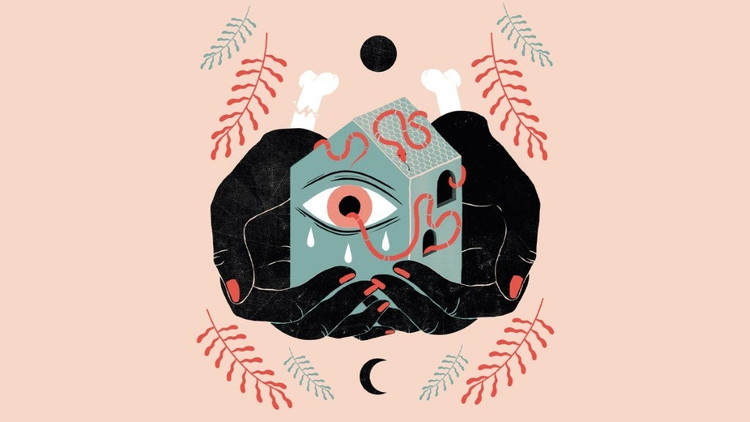
Image credit: Adobe Stock/Marta Font.
The second coming of cyberpunk
On the other end of the Modern Gothic spectrum of influences is cyberpunk, bringing a range of slick surfaces and materials that collide and layer with grunge and glitch textures and moody lighting effects. More than just sci-fi, the cyberpunk genre emerged in the 1980s and ’90s offering sharp, often cynical commentary on the darkest possibilities of technology, surveillance, and data culture. Cyberpunk narratives are typified by a sense of alienation within a rapidly advancing technological landscape, with a neon-lit urban setting and fashion aesthetic that includes high-tech body modification.
“Goth and cyberpunk are very visual countercultures, very expressive and dramatic,” says Molloy. “The popularity of these countercultures now is partially a response to minimalism and hyper-curated Instagram culture. That look just doesn’t represent everyone, so people are swinging the other way. Going darker is a creative response to the homogenization of internet culture.”
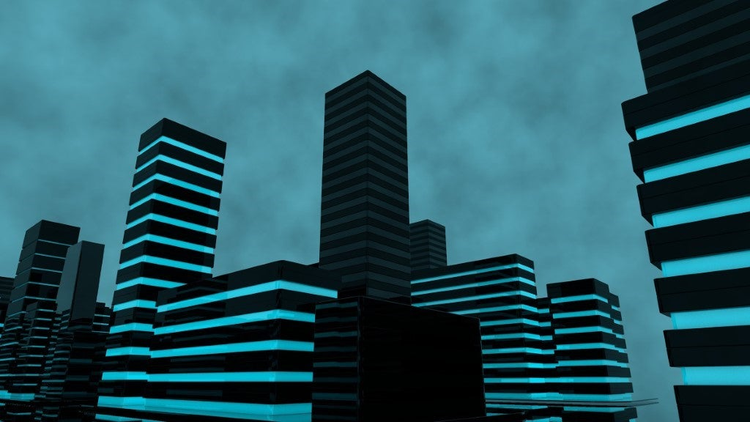
Image credit: Adobe Stock/Bruno R. B. S.
These interconnected genres celebrate identities outside the mainstream. While Goth fashion (with its confrontational black lipstick and spike-laden looks) is often about expressing oneself as a defiant, dangerous, or undead outsider, cyberpunk offers stories of rebels subverting dystopian systems from within and without, using the very same tools of high-tech oppression. (For a current example of how modern cyberpunk looks in practice, see the recently published New York Times feature detailing the efforts of activists to use facial recognition software to identify police officers who won’t readily identify themselves.)
“There is a definite cynicism about technology and the power it has over us, yet there is also a lot of hope,” notes Molloy. “Today you see a lot of young, very tech-savvy groups who are so well-informed about how algorithms work on an intrinsic level that they’ll manipulate ‘the algo’ — or their feed — for their own benefit. I find that inspiring. The ‘punk’ aspect of cyberpunk is that pushback against the power technology has. The glitch aesthetic can reflect the ways that you can break technology to better work for you.”
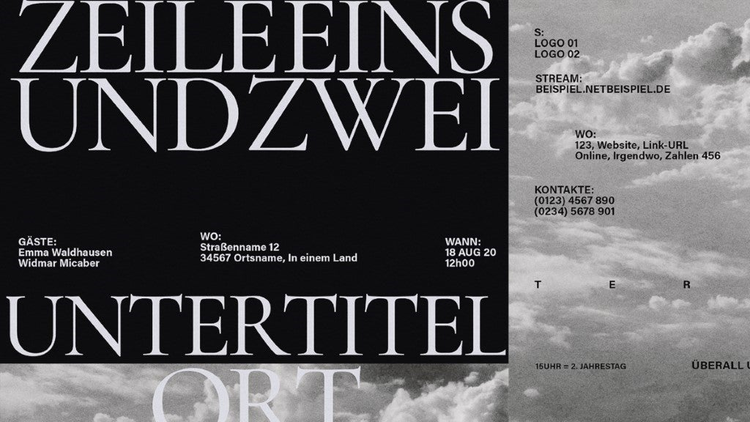
Image credit: Adobe Stock/The Royal Studio.
Embracing the power of glitch
Glitch art (or simply “glitch”) is an artistic sub-genre that focuses on the artifacts and unintentional defects created by technology (the crashes, the blue screens, distortion, and pixilation) and elevates those artifacts to become a central subject or design motif. And glitch is yet another key element of Modern Gothic design.
“Glitch art and even analog representation in these visuals is a reflection of the desire to have more control over your own media,” explains Molloy.
Art and tech collectives (like CODAME and Gray Area in San Francisco and EYEBEAM in New York City) offer a mix of education and fine art sensibilities applied to the glitch and cyberpunk aesthetics and ethos.
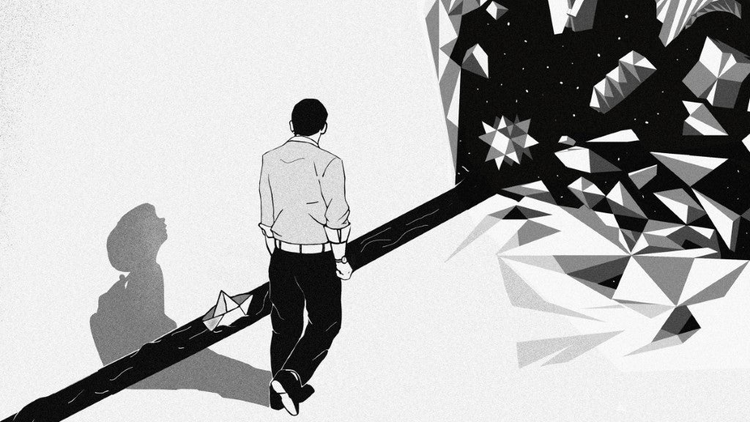
Image credit: Adobe Stock/Pierre Appell.
Collectives like these “help people regain control over technology, through education about how it works,” says Molloy. “I think when you see how technology can disenfranchise us, then show how to take control of it by breaking it, that resonates with people in a way that makes them feel like they are not being controlled by a hyper-connected world anymore.”
This is just one of the ways art and tech activists and designers are using visual strategies, not only to express themselves but also to explore and wield personal power.
Find more dark, high-tech design inspiration in the Adobe Stock Modern Gothic collection.